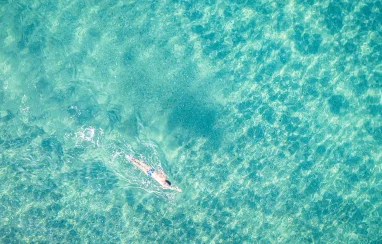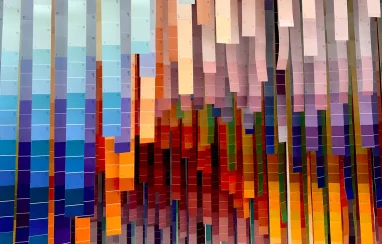By Xenia Georgiadou
From shopping centers to state services and parks, if there was a single thread connecting Poka-Yio’s projects, that would undoubtedly be his fascination with public spaces – especially those associated with completely contrasting uses. The Greek curator and visual artist activates these spaces through contemporary art to address the issues that concern, move and inspire us: “I am interested in what someone experiences from the first moment they enter a space until the last. If something has clicked for them, even slightly, then we have achieved a connection,” he says.
We meet Poka-Yio a few weeks before the opening of W Costa Navarino, as he and his team work feverishly on the ambitious endeavor of assembling and curating an art collection for the destination. “The art is not there for decorative purposes,” he says. “Contemporary art, wherever it is, serves a deeper purpose: it must take you by surprise, challenge you to look at the world through a different prism, make you think and, ultimately, contribute to what W Costa Navarino represents, which is a different hospitality experience.”
The concept
True to its motto, energy liberated, W Costa Navarino does not just offer hospitality, it proposes a new way of life. “Its philosophy is closely linked to notions of inclusiveness and culture” says Poka-Yio. “These are concepts that interest me and my team and were instrumental in shaping our strategy. The first question we asked ourselves when we came to Costa Navarino was how people approach a work of art. A work of art should be like an interesting person. What kind of emotions are stirred by the encounter? What do you want to know about this person? Art in a hotel space needs to strike a balance between the visual and the overall experience, so that it is not seen clinically, cut off from everything else that’s going on in the space. Visitors nowadays have a much more discerning point of view, curiosity, and changing sensibilities and insight. All this needs to be taken into consideration in the overall planning. The work you show needs to stimulate their curiosity and their interest, and it needs to encourage dialogue. Everything in W Costa Navarino needs to express this philosophy. It’s not a hotel that will treat you as though you’re unable to think for yourself; it will not hand you a “rounded experience.”
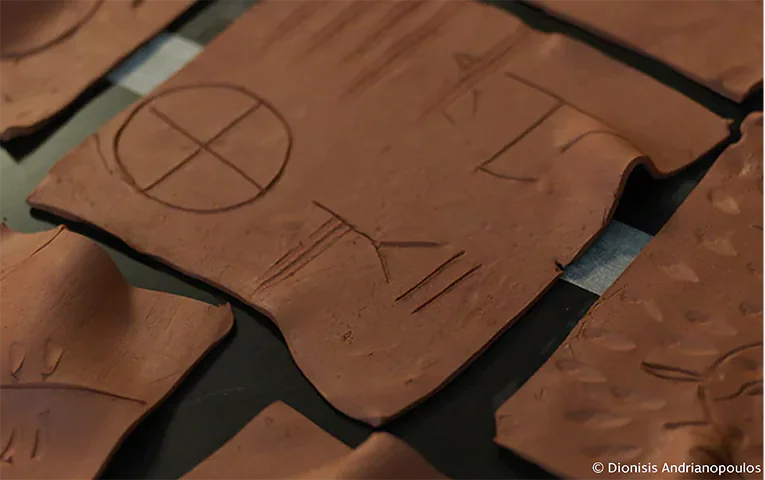
The artwork
“It was clear to us that the W is an international, all-welcoming hotel, so we didn’t want to force feed its visitors with “Greekness.” We’ve put greater emphasis on elements that evoke the area’s history and landscapes, but we deliver these aspects tacitly, peripatetically, even abstractly. We were inspired, for example, by the Linear B script developed by the Bronze Age Mycenean civilization, whose influence runs deep in this part of Greece. Our era is an age of codified communications, with emoticons, abbreviated sentences and punctuation forming an entirely new world, so we created a series of ceramic tiles with etchings that suggest a condensed form of communication. These tiles have been placed throughout the space. Other works like the quirky vases in the villas, are inspired by archaeological artifacts discovered at the bottom of the sea, with lichens and moss growing out of them, like a pop excavation, or the modernist sculptures of Manos Tsichlis, which are inspired by African figurines. I also love the delicate designs of Evi Roumani, which draw inspiration from the digital world and act like monuments to mundane, mechanical actions.
It is important to us that art shows you a different path, to ponder your life, and connect you to your present location and state of being. The photographs by the students of LAB 12, a pioneering workshop run by the Athens School of Fine Arts, which I supervise as associate professor at the university, respond to this demand, as they “play” with the landscape. They also evoke a sense of summer and freedom. It is also important to note that the experience is not conveyed exclusively through sight; it needs to stimulate all the senses, like touch. To this end, we have two reliefs made of hotel towels in the spa areas. The idea behind this was to create a more playful piece that will make you step away from the image, appearing as if it’s an intrinsic part of the space.”
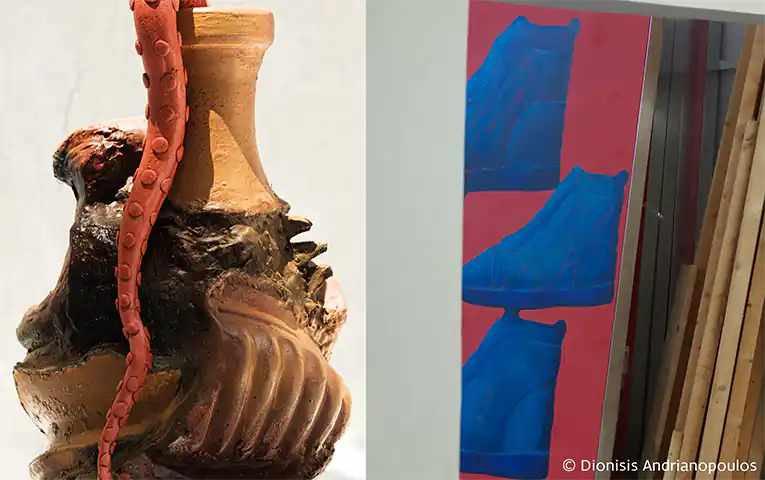
Art, audience, recreation
“Historically, art has always been where the people are – in churches, public spaces, big buildings. The image of the agoraphobic artist living in a basement, beleaguered, destitute and in a constant state of insecurity, is something that was born after the age of Romanticism. It is an impression that gained ground over the years, a wound that festered, that piled guilt onto artists’ shoulders and shrank their horizons. We are a part of this world, this energy, and we can and must be everywhere. Not everyone, of course, feels that way. Nevertheless, we cannot operate by shutting ourselves off. Artists who have done a large-scale piece understand that this is an ongoing conversation, and it helps take your work a step further. It forces you to strengthen how you work, to reject things you took for granted and to restart from a different launching point. I am fascinated by the application of art in unexpected places and the presence of artists as ubiquitous public figures – not, of course, in an arrogant way, shoving their taste down people’s throats.”
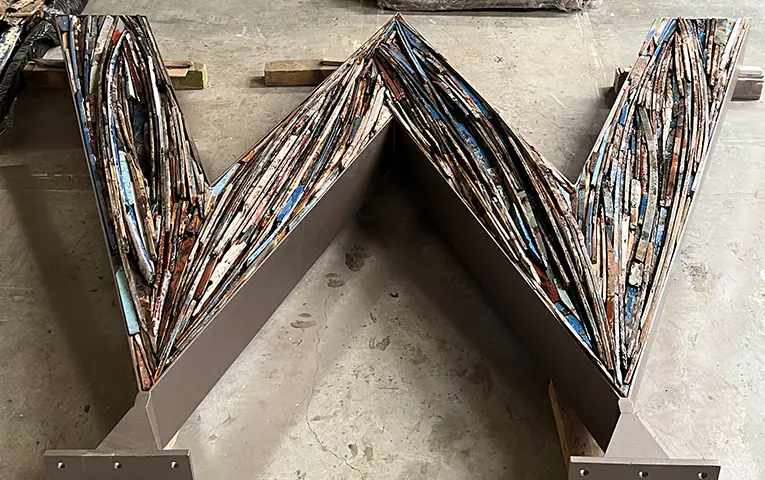
W Τοtem. The story
“The W Totem is different to any other destination. For this reason, I turned to the old-fashioned fishing boats and trawlers that are quickly disappearing from Greece’s seas. This modern-day experience of seeing the destruction and abandonment of old boats could fill an entire article. We visited boatyards and marinas and collected wood from old boats, which we used to fill in the metallic frame forming the hotel’s sign. This idea was inspired by seafaring, which runs so deeply in the Constantakopoulos family. What we did, in a way, was to connect the family’s history to the sea, which seems to almost flood into the hotel, and to create a link to an old world that continues to influence your thoughts and aesthetic. In our case, the process of choosing and collecting the materials was just as important as the result.”
